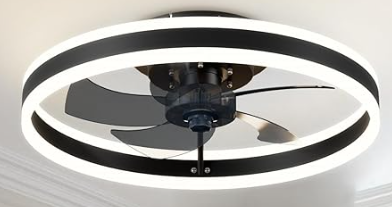Should I have a ceiling fan in every bedroom?
When designing or upgrading your home, comfort often takes center stage, especially in personal spaces like bedrooms. Among the many decisions homeowners face, deciding whether to install a ceiling fan in every bedroom is both practical and personal. While ceiling fans have long been celebrated for their functionality, their role in a bedroom can vary based on factors like climate, design preferences, and lifestyle needs. Let’s take a deep dive into the reasons why you might—or might not—want to consider a ceiling fan for every bedroom, analyzing everything from their impact on energy efficiency to their effect on room aesthetics and health.
The Practical Benefits of Ceiling Fans in Bedrooms
Ceiling fans offer several tangible benefits, particularly in climates with pronounced heat during the summer months. By promoting air circulation, ceiling fans create a cooling breeze that makes a room feel more comfortable without the need to constantly rely on air conditioning. This is especially beneficial for individuals who prefer not to sleep under strong air conditioning or are conscious of their energy usage. Moreover, in bedrooms shared by couples with differing temperature preferences, a ceiling fan can provide a compromise, cooling one side of the bed while allowing the other to remain warm. Beyond comfort, ceiling fans also help reduce stagnant air, making bedrooms feel fresher and more inviting, even during colder months when heating systems are used.
Energy Efficiency and Cost Savings: A Compelling Case
One of the most compelling arguments for installing ceiling fans is their impact on energy efficiency. A ceiling fan uses significantly less electricity than an air conditioning system, yet it can make a room feel up to 4 degrees cooler, allowing you to raise the thermostat without sacrificing comfort. Over time, this can lead to noticeable reductions in energy bills, especially in households where multiple bedrooms are used nightly. For homeowners aiming to adopt greener lifestyles, ceiling fans align with energy conservation goals while also reducing their carbon footprint. While the initial cost of installing ceiling fans in every bedroom might be high, the long-term savings on energy bills can make it a financially sound decision for many families.
Design Versatility and Aesthetic Integration
Modern ceiling fans come in an impressive array of designs, ensuring that there is a model to suit virtually any bedroom style. Whether your decor leans toward contemporary minimalism, vintage charm, or even luxurious sophistication, there are ceiling fans designed to complement your aesthetic. Many fans now feature integrated lighting, further enhancing their functionality and reducing the need for separate fixtures. Additionally, high-tech options with smart home integration allow users to control fan speeds and lighting via apps or voice commands, adding a touch of modern convenience. However, it’s worth considering that in some minimalist or ultramodern designs, a ceiling fan might feel out of place. For these rooms, sleek alternatives like recessed lighting or portable fans might better preserve the visual flow.
Potential Drawbacks: Noise, Space, and Maintenance
Despite their many benefits, ceiling fans are not without drawbacks, and these should be carefully weighed. One common complaint is the noise some fans produce, particularly older models or less expensive options. While many high-quality fans operate almost silently, even a faint hum can be distracting for light sleepers. Space can also be a concern; in rooms with low ceilings, fans may feel intrusive or even pose safety risks, especially for taller occupants. Building codes typically recommend at least a seven-foot clearance between the fan blades and the floor for safe operation. Maintenance is another consideration—ceiling fans require periodic cleaning to prevent dust buildup and ensure optimal performance, a task that can become burdensome if you have multiple fans throughout the home.
Health Implications: Comfort vs. Sensitivities
From a health perspective, ceiling fans can be both beneficial and problematic depending on the individual. For most people, the gentle airflow provided by a ceiling fan can improve comfort and even aid sleep by creating a consistent white noise effect. However, for individuals with allergies, asthma, or respiratory sensitivities, ceiling fans can sometimes exacerbate issues by circulating dust and allergens that settle on blades over time. Regular cleaning can mitigate this issue, but it’s an important factor to consider. Additionally, during colder months, the breeze created by ceiling fans might feel uncomfortable, even if the fan is set to reverse mode to redistribute warm air from the ceiling.
Financial Considerations: Balancing Costs and Benefits
Installing ceiling fans in every bedroom requires an upfront investment that goes beyond the cost of the fans themselves. Professional installation is often necessary, especially in homes without pre-existing wiring for ceiling fans, adding to the overall expense. However, the potential for long-term energy savings can offset these initial costs, particularly in homes located in warmer regions where fans are used frequently. For budget-conscious homeowners, it may be worth prioritizing bedrooms that are used most often or exploring portable fan options for less-utilized spaces.
Alternatives and Complementary Options
If you decide against installing ceiling fans in every bedroom, there are alternative solutions that can provide similar benefits. Portable fans, such as tower or floor fans, are flexible options that can be moved between rooms as needed. These fans are often quieter and easier to clean than ceiling fans, making them ideal for smaller bedrooms or spaces where ceiling height is a concern. Additionally, air purifiers with fan functions can improve airflow while also filtering out allergens, providing a dual-purpose solution for health-conscious individuals. For those focused on aesthetics, incorporating subtle ventilation systems or energy-efficient HVAC zoning can offer effective temperature control without altering the room’s visual appeal.
